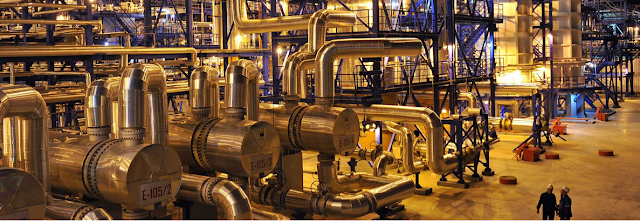3 Steps Involved In The Desalting Process
When it comes to oil-refining, you cannot take any chances. As desalting is vital for the purification of crude oil, you need to ensure that the equipment being used in your industry functions efficiently. To do this, you need to use the best desalter for crude oil in your industry. However, before you check the desalter in your refinery, it will help if you had the necessary information about the steps involved in the process.
Here are some of the steps involved in the desalting process you should know about.
1. Dilution of Water
The first step in the desalting process is the dilution of water. In this step, the water passes through the preheat train and pumped to the desalters. Thereafter the water that is recycled from the desalter enters the static mixer and injected. It ensures optimal contact with the surface of both the fluids needed for the process.
2. Emulsification of water
The second step in the process is the emulsification of water. The diluted water is emulsified with oil. The purpose of this step is to avoid the first separation with oil. Then the static mixers act as the emulsifying devices that help in improving the contact between the crude oil (salt) and the injected wash water from the source.
3. Distribution of emulsion
The third step involves the distribution of emulsion. This happens in the electrostatic field in the desalting process. The mixture which contains oil and water is then emulsified uniformly across the field. After the other treatment, the emulsion enters the Desalters where it is segregated into two separate phases by electrostatic coalescence.
Conclusion
After these steps, some of the other steps involved in the process include electrostatic coalescence and the settling of water droplets in the system. When you get the best desalter for crude oil in your industry, all these processes can be performed with ease.
Here are some of the steps involved in the desalting process you should know about.
1. Dilution of Water
The first step in the desalting process is the dilution of water. In this step, the water passes through the preheat train and pumped to the desalters. Thereafter the water that is recycled from the desalter enters the static mixer and injected. It ensures optimal contact with the surface of both the fluids needed for the process.
2. Emulsification of water
The second step in the process is the emulsification of water. The diluted water is emulsified with oil. The purpose of this step is to avoid the first separation with oil. Then the static mixers act as the emulsifying devices that help in improving the contact between the crude oil (salt) and the injected wash water from the source.
3. Distribution of emulsion
The third step involves the distribution of emulsion. This happens in the electrostatic field in the desalting process. The mixture which contains oil and water is then emulsified uniformly across the field. After the other treatment, the emulsion enters the Desalters where it is segregated into two separate phases by electrostatic coalescence.
Conclusion
After these steps, some of the other steps involved in the process include electrostatic coalescence and the settling of water droplets in the system. When you get the best desalter for crude oil in your industry, all these processes can be performed with ease.


Comments
Post a Comment